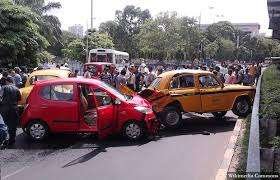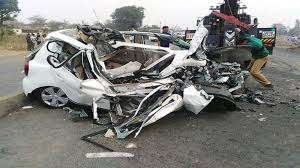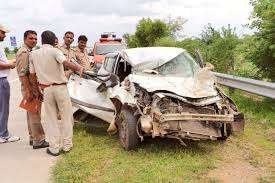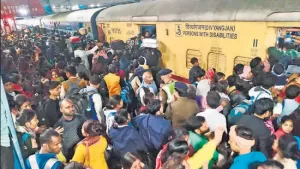
Indian Traffic Rules: Chaos, Accidents & the Need for Change
Indian People, Traffic Rules, and Common Sense: A Critical Examination
Introduction
India, known for its vibrant culture, rich heritage, and diverse traditions, is also infamous for its chaotic traffic. The Indian roads often present a scene of disorder, with honking vehicles, reckless driving, and a blatant disregard for traffic rules. Despite the existence of well-defined laws, the on-ground reality tells a different story. This article delves into the relationship between Indian people, traffic rules, and the role of common sense—or the lack thereof—in road discipline.
The Traffic Situation in India
India has one of the highest numbers of road accidents globally, with thousands of lives lost every year due to traffic violations and negligence. Despite efforts by the government and law enforcement agencies, reckless driving, overspeeding, and disregard for traffic rules continue to be widespread problems. The primary reasons include poor infrastructure, lack of awareness, and a deep-seated culture of defiance towards rules.
Why Do Indians Violate Traffic Rules?
Several factors contribute to the frequent violation of traffic rules in India:
- Lack of Awareness: Many drivers, especially in rural areas, have little knowledge of traffic signs, road markings, and the importance of following rules.
- Poor Law Enforcement: Corruption and lack of strict policing make it easy for offenders to get away with violations.
- Population and Congestion: With over a billion people, cities are overcrowded, leading to impatience and rash driving.
- Mindset of ‘Jugaad’ (Shortcuts): Many Indians believe in finding loopholes instead of adhering to the system.
- Lack of Proper Infrastructure: Poorly maintained roads, lack of pedestrian pathways, and inadequate public transport contribute to indiscipline.
Awareness of Helmet and Seat Belt Usage
Wearing helmets and seat belts is one of the simplest yet most effective ways to reduce fatalities and serious injuries in road accidents. However, many Indian drivers and riders neglect this basic safety measure. Helmets significantly reduce the risk of head injuries among two-wheeler riders, yet many avoid wearing them due to discomfort, ignorance, or overconfidence in their riding skills. Similarly, seat belts protect car occupants from being thrown forward during collisions, but many passengers, especially in the back seats, ignore their usage. The government has implemented strict laws mandating helmet and seat belt usage, but enforcement remains weak in many areas. Public awareness campaigns, stricter penalties, and behavioral changes are essential to ensure compliance. Educating people about the life-saving benefits of helmets and seat belts can play a crucial role in reducing road accident fatalities.

Major Accidents Due to Violation of Traffic Rules
Here are five major incidents where disregard for traffic rules led to severe accidents:
- Delhi’s Hit-and-Run Case (2023)
A reckless driver, under the influence of alcohol, jumped a red light near Connaught Place and crashed into a group of pedestrians crossing the road. The impact led to the death of two people and serious injuries to three others. The incident sparked outrage, emphasizing the need for stricter DUI laws. - Pune Bike Racing Tragedy (2022)
Two college students lost their lives when they participated in an illegal street race on Pune’s main roads. Their high-speed biking resulted in a collision with a truck, causing instant fatalities. This incident shed light on the increasing problem of youth engaging in dangerous racing without proper safety measures. - Mumbai’s Wrong-Way Driving Catastrophe (2021)
A driver entered a one-way street in South Mumbai in the wrong direction to avoid a traffic jam, leading to a head-on collision with a school bus. Several children sustained injuries, and one lost their life. The tragedy highlighted the reckless attitude of some motorists who prioritize convenience over safety. - Hyderabad’s Overspeeding BMW Crash (2020)
A high-profile businessman’s son was driving a BMW at over 150 km/h on a city road when he lost control and crashed into an auto-rickshaw. The driver and two passengers in the auto-rickshaw died instantly. The case brought attention to the rising trend of luxury car owners flouting traffic norms. - Chennai’s Signal Violation Disaster (2019)
A truck driver, trying to beat the red light at a busy intersection, plowed into a row of vehicles waiting at the signal. The chain reaction resulted in multiple fatalities and severe injuries. This accident underscored the deadly consequences of jumping signals and not respecting traffic rules.
The Role of Common Sense in Traffic Discipline
Common sense plays a crucial role in ensuring road safety. However, many road users in India seem to lack basic road sense, leading to dangerous situations. Some common examples of negligence include:
- Jumping Red Lights: Many motorists consider traffic signals optional, increasing the risk of accidents.
- Wrong-Way Driving: To save time, some drivers move in the wrong direction, causing confusion and endangering lives.
- Overloading Vehicles: Be it motorcycles, rickshaws, or trucks, overloading is common, leading to instability and accidents.
- Using Mobile Phones While Driving: Many drivers use phones, leading to distractions and collisions.
- Ignoring Pedestrian Crossings: Pedestrians are often forced to navigate through speeding vehicles, as drivers rarely stop at crossings.
- Haphazard Parking: Blocking roads and footpaths by parking irresponsibly causes traffic congestion.
- Drunk Driving: Despite strict laws, many individuals continue to drive under the influence, putting lives at risk.

The Need for a Behavioral Change
The fundamental problem is not just the lack of rules but the attitude of the people towards them. The following changes can help improve traffic discipline:
- Better Education and Awareness: Traffic rules should be a mandatory part of school and college curriculums.
- Strict Law Enforcement: Heavy fines and penalties should be imposed on violators without exceptions.
- Improved Road Infrastructure: Better road designs, proper signages, and pedestrian-friendly pathways can improve discipline.
- Encouraging Public Transport Usage: A well-developed public transport system can reduce congestion and encourage people to follow traffic norms.
- Community Participation: Awareness campaigns, social media movements, and local committees can help spread awareness about traffic safety.
Success Stories: Cities That Have Improved Traffic Conditions
Some Indian cities have taken significant steps to improve traffic discipline:
- Mumbai: The Mumbai Police have implemented strict no-parking zones and imposed heavy fines for violations, improving road discipline.
- Bangalore: With dedicated lanes for buses and cyclists, the city has made efforts to improve traffic conditions.
- Surat: The city’s strict implementation of traffic laws and effective use of CCTV cameras have reduced traffic violations.
Conclusion
Indian roads will remain chaotic unless people realize that traffic rules are designed for their safety, not as an inconvenience. A collective effort involving the government, law enforcement, and the public is required to ensure road safety. Ultimately, it is not just about laws but about cultivating a mindset of responsibility, discipline, and common sense. Only then can India move towards a more organized and safer traffic system.









Add comment